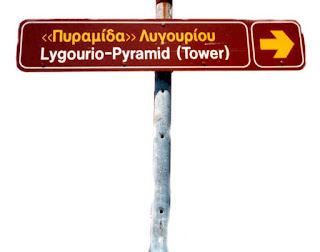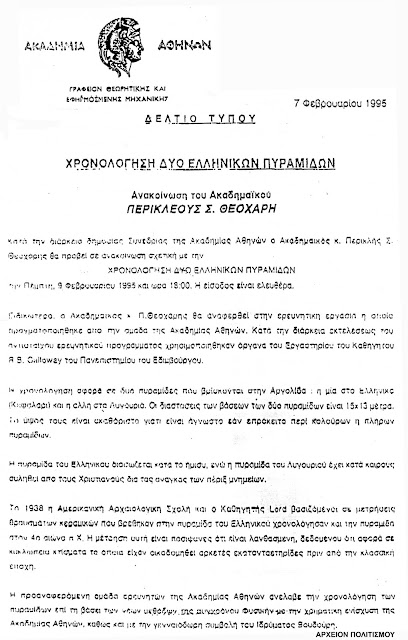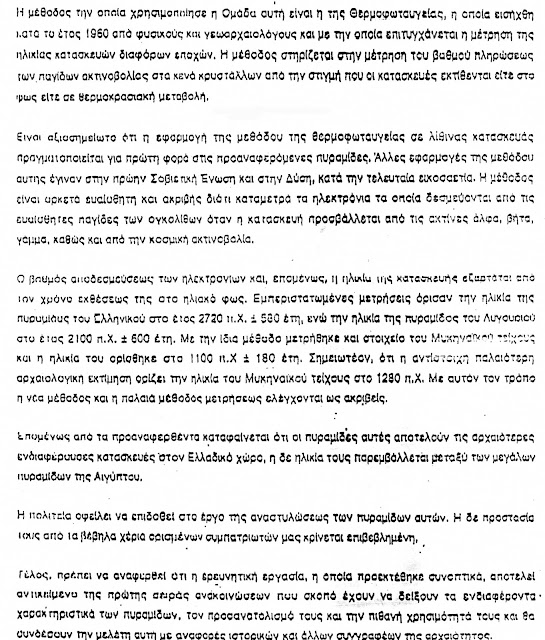 |
| Η πινακίδα της Αρχαιολογικής Υπηρεσίας, που υποδεικνύει την πυραμίδα του Λυγουριού (φωτ. Γ. Λεκάκης). |
| Η αρχαία ελληνική πυραμίδα στο Ελληνικό Αργολίδας, κτίσμα του 2720 π.Χ. (φωτ. Γ. Λεκάκης). |
| Η αρχαία ελληνική πυραμίδα στο Λυγουριό Αργολίδας, κτίσμα του 2100 π.Χ. (φωτ. Γ. Λεκάκης). |
ΔΕΙΤΕ ΕΠΙΣΗΣ:
P.S. Theocaris, I. Liritzis, R.B. Galloway: “Dating of Two Hellenic Pyramids by a Novel Application of Thermoluminescence” (“Χρονολόγηση δύο ελληνικών πυραμίδων με μια νέα εφαρμογή της θερμοφωταύγειας”)
A new variant of thermoluminescence dating has been employed to determine the age of construction of two pyramids, one at Hellenikon and the other at Ligourio in Argolid, Peloponnese, Greece. The dating technique concerns the inter-block surfaces of the limestone building blocks and relies on the electron traps responsible for thermoluminescence in the surface layer of the carved limestone blocks having been bleached by sunlight prior to the blocks being incorporated into the structure. Nine determinations of age have been made, complemented by one which relates to a Mycenean wall of known age. From the average ages, the date of construction of the Hellenikon pyramid was found to be 2730±720BCand of the Ligourio pyramid 2260±710BC. The date of the Mycenean wall was determined as 1110±340BC, in agreement, within the measurement uncertainty, with the established date of 1280BC. However, the pyramids were previously attributed to Classical/Hellenistic times, mainly on the basis of somein situpottery finds. The present dating approach revises the age of the pyramids and shows them to be prehistoric.
ΠΗΓΗ: Journal of Archaeological Science, vol. 24, issue 5, May 1997, pages 399-405:
http://www.sciencedirect.com/science/article/pii/S0305440396901247






